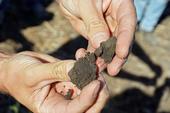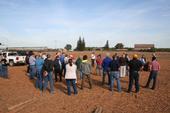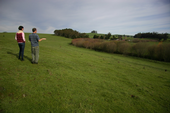- Author: Jeannette E. Warnert

Six UC Cooperative Extension research projects were awarded funding ranging from $100,000 to $250,000 each from the California Department of Food and Agriculture Healthy Soils Program. The grants are designed to fund implementation and demonstration of on-farm soil health practices that reduce greenhouse gas emissions and store carbon.
One of the grant recipients, John Bailey, director of the UC Hopland Research and Extension Center in Mendocino County, will use the $100,000 award to establish a perennial hedgerow at...
- Author: Jeannette E. Warnert

The numbers are beginning to trickle in confirming UC Cooperative Extension advisor Brent Holtz' hunch. Chipping and returning expired almond orchards into the soil where they grew is not only environmentally sound, it is economically smart.
(View a three-minute video of the machinery in action at the end of this post.)
After about 20 years, almond orchards' productivity and vigor begin to decline. Most farmers remove the old trees and plant younger, more vigorous replacements to keep up almond production.
In the past, old trees were easily and cheaply disposed of: they were...
- Author: Jeannette E. Warnert

The revegetation of streams and creeks that crisscross California rangeland can play a significant role in helping counties meet carbon emission standards.
“We have long known that stream revegetation improves wildlife habitat and enhances water quality, but that fact that the vegetation and trapped sediment capture carbon underscores the importance of this conservation practice,” said David Lewis, a UC Agriculture and Natural Resources (UC ANR) watershed management advisor for Marin, Sonoma and Napa counties.
Going back to the time when Gen. Mariano Guadalupe Vallejo was running long-horn cattle on a vast tract of...



